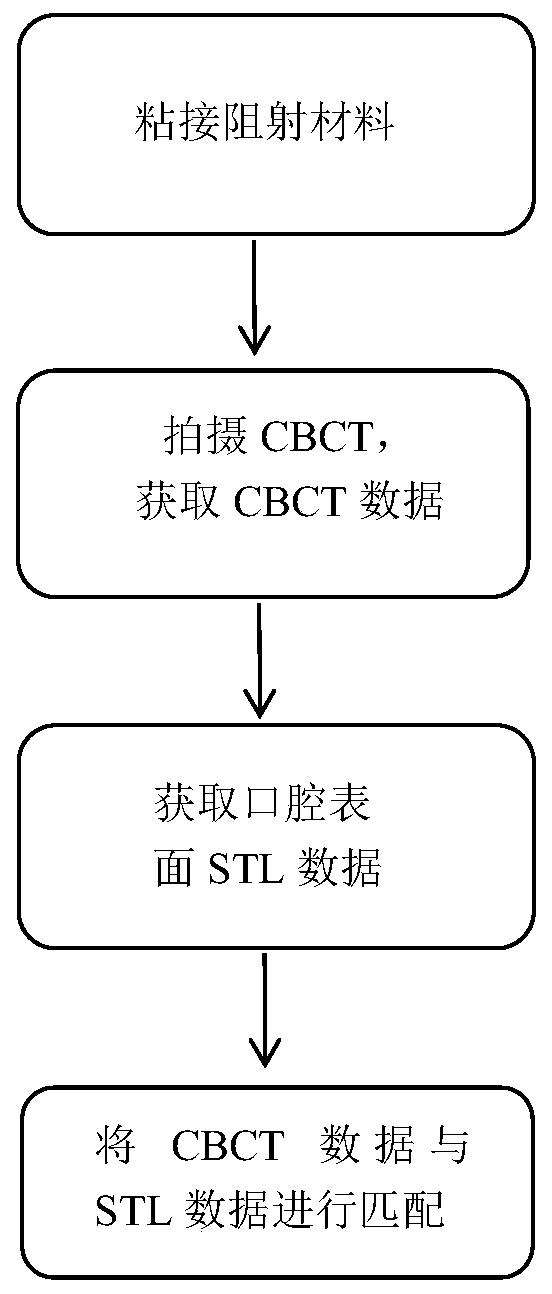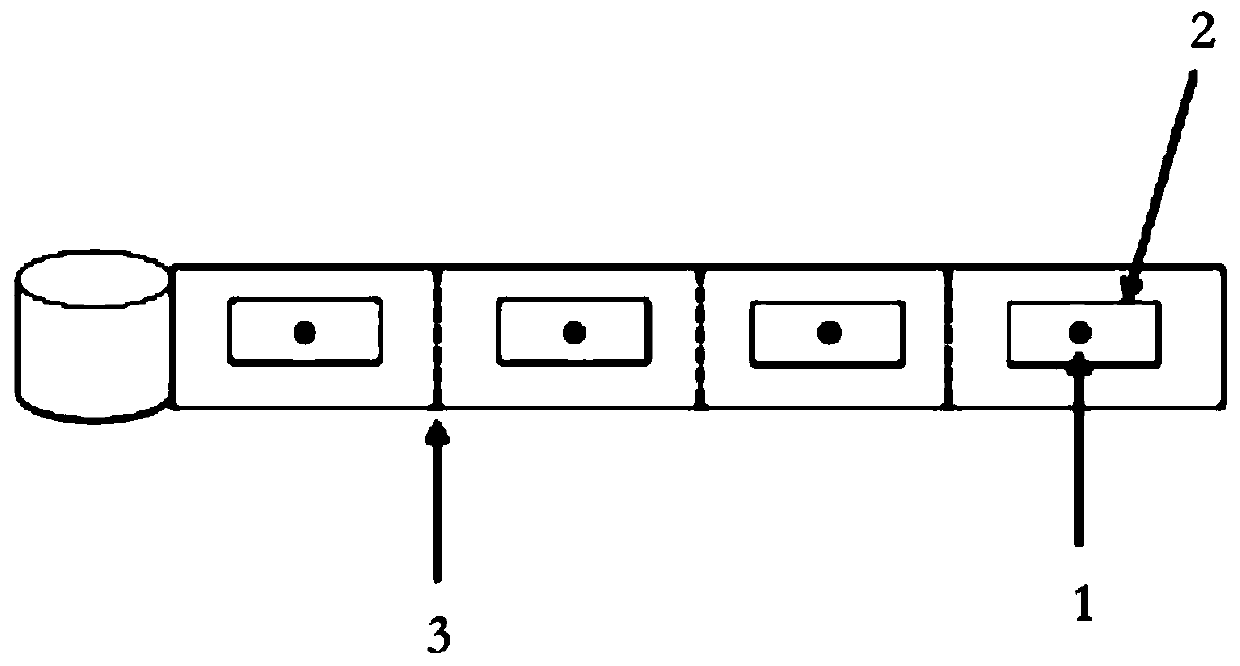Method for accurately matching CBCT data with STL data
An accurate matching and data technology, applied in the fields of medical science, dentistry, dental repair, etc., can solve the problems of increasing patient cost and radiation dose, increasing case time and workload, and low matching accuracy, so as to reduce clinical medical costs. cost, reduce the number of follow-up visits, and improve the effect of comfort
- Summary
- Abstract
- Description
- Claims
- Application Information
AI Technical Summary
Problems solved by technology
Method used
Image
Examples
Embodiment 1
[0067] Such as figure 1 , as shown in 6-10, a method for accurately matching CBCT data and STL data, when the number of remaining healthy teeth is greater than 5, the steps are:
[0068] a) Bond radio-opaque material to teeth, radio-opaque material to gingival mucosa or / and radio-opaque material to other anatomical features; on teeth, gingival mucosa or / and other anatomical features Adhesive radio-blocking material at least 4 points above (as shown in Figure 6); other anatomical features include nasal ridge, mucosal inflection, bony prominence, and lingual prominence.
[0069] b) Carry out CBCT shooting to obtain CBCT data with information of radio-blocking materials (such as Figure 7 shown);
[0070] c) Obtain the STL data of the oral cavity surface with radio-opaque material information, the method includes: 1) Take an oral impression, the radio-opaque material will leave a mark on the corresponding position of the impression material, and after the impression is hardened...
Embodiment 2
[0073] Such as figure 1 , 5 , 11-14, a method for accurately matching CBCT data and STL data, when the number of remaining healthy teeth is less than 5, includes the following steps,
[0074] a) Adhesive radiopaque material (e.g. Figure 11 shown).
[0075] b) Carry out CBCT shooting, and obtain CBCT data with information of radio-blocking materials;
[0076] c) Obtain the STL data of the oral cavity surface with radio-opaque material information: the method includes: 1) Take an oral impression, the radio-opaque material will leave a mark on the corresponding position of the impression material, and after the impression is hardened, place the radio-opaque material The material is copied to the impression, and the oral impression is scanned with the oral surface scanning device to obtain the STL data with the information of the radiation-resistant material (such as Figure 13 shown); or 2) Scan directly in the oral cavity with oral surface scanning equipment to obtain STL d...
Embodiment 3
[0079] Such as figure 2 , 3 , Shown in 4, a kind of anti-radiation material, the shape of anti-radiation material is point (such as Figure 15 shown), line (such as image 3 shown) or stripes and set on the marking tape. The dot-shaped anti-reflection material is square (such as Figure 17 shown), rhombus (such as Figure 16 shown), rectangular or polygonal (such as Figure 18 shown). The dot-shaped anti-reflection material is a single point (such as figure 2 shown), two points (such as Figure 4 shown) or a combination of multiple points. Such as image 3 As shown, during packaging, the linear radiation-blocking material 1-1 is arranged on the marking tape 2 . Such as figure 2 , 4 As shown, during packaging, the dot-shaped anti-radiation material 1 is arranged on the marking tape 2 , and a cutting line 3 is set on the marking tape 2 . According to different packaging requirements and production strategies, the radio-blocking material can be packaged in rolls,...
PUM
 Login to View More
Login to View More Abstract
Description
Claims
Application Information
 Login to View More
Login to View More - R&D
- Intellectual Property
- Life Sciences
- Materials
- Tech Scout
- Unparalleled Data Quality
- Higher Quality Content
- 60% Fewer Hallucinations
Browse by: Latest US Patents, China's latest patents, Technical Efficacy Thesaurus, Application Domain, Technology Topic, Popular Technical Reports.
© 2025 PatSnap. All rights reserved.Legal|Privacy policy|Modern Slavery Act Transparency Statement|Sitemap|About US| Contact US: help@patsnap.com



